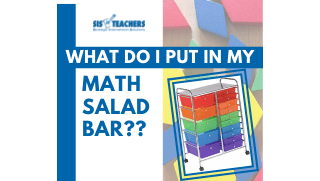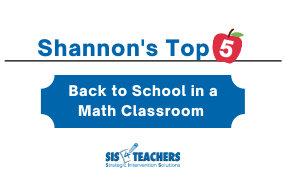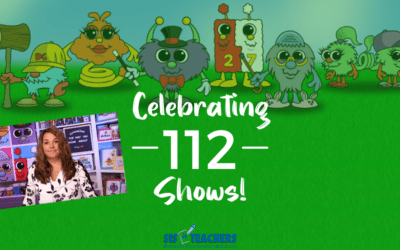As I’m in schools throughout Michigan and the United States, every place I go has a different way of thinking about math and different levels of rigor and expectation.
We need to rethink traditional math and make a shift away from memorizing procedures and more towards understanding concepts on a deeper level. There are so many different programs that I’ve working alongside teachers with as we work to help them with the instructional strategies that they’re teaching: GO Math!, GO Math! California, i-Ready, Eureka Math/Engage NY, Everyday Mathematics, My Math, Math Expressions, enVisionmath2.0 Common Core, Investigations…
All Roads Lead to…?
Whether I’m in a classroom modeling and reverse coaching or delivering professional development to teachers, it is really eye-opening to see the differences between all these programs. We’re all using 21st century standards to help prepare kids in today’s world. In any given grade level, the state sets the standards as to what teachers should be teaching. However, I can’t quite seem to connect the fact that, when I start to look at some of the different math programs, they have quite a variety of ways of getting to the same standard.
I’ve always promoted the idea that your curriculum is not your district-purchased textbook or program. Your curriculum is the standards, as outlined by the state for whatever grade you teach. The textbook or program is a resource designed to help you get to those standards, which is great if you aren’t quite as familiar with the math standards to start with. Your program is a train, if you will, to help you carry the cargo of the standards and best practices. And don’t forget about the K-2 and 3-5 Common Core Math Companion books, which are another great resource that can help you unpack the standards.
Some school districts have the challenge of having a dated version of their program that might not be current with the 21st century expectations for what children should know and be able to do. This makes it hard to get an accurate picture of progress if you’re comparing to another district that uses a different or more up-to-date program. Just because you have an old program though, it’s not the end of the world!
In the Classroom
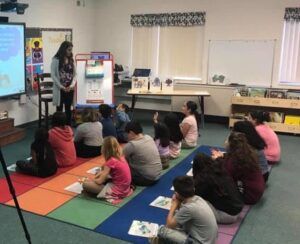 This week, I was working with a school district in this particular predicament. They have a math program that came out most recently about seven years ago. It’s not really updated, and it doesn’t have the Common Core standards in the book (it has GLECs). Based on what we do at Strategic Intervention Solutions and what we know about number sense, word problems, and math comprehension, it was very evident to me that the program didn’t necessarily meet the rigor and expectations for that particular grade.
This week, I was working with a school district in this particular predicament. They have a math program that came out most recently about seven years ago. It’s not really updated, and it doesn’t have the Common Core standards in the book (it has GLECs). Based on what we do at Strategic Intervention Solutions and what we know about number sense, word problems, and math comprehension, it was very evident to me that the program didn’t necessarily meet the rigor and expectations for that particular grade.
For this particular program, I looked at the first four topics for first grade and it was very eye-opening. It didn’t seem quite the complexity we would be expecting at a first grade level. The story problems certainly were too simplistic for 1st grades, for example, the hardest type of story problem was: “Shannon has five apples, and Jana has four apples. Who has more?” For first grade story problems, we typically think of part/whole problems with addition or subtraction, or missing addends, or maybe even additive comparison bar. Many of the worksheets provided by the program also seemed too simplistic, showing pictures students just having to write numbers.
As we were examining the program, I found myself asking the question: Can we take a program that isn’t as aligned to our standards as it could be and adjust it? Could we apply the eight mathematical practices, our thinking with number sense and number talks, CPA (concrete, pictorial, and abstract), and our best way of knowing how to use word problems in conjunction with model drawings? Could we take that train and polish up a few pieces? Or is this train just so derailed that we need to get a new one?
Our task with this school was to work through backwards designing and implementing math workshop. Upon backwards designing lessons, we looked at how we could create model drawing journals for the students based on the story problems that were in their program.
These teachers worked really hard with me! At first, it seemed like a daunting task because the teachers and I aren’t in the business of writing new curriculum. But we started to look at how we could enhance the things they were teaching and how we could get them the materials they needed.
In this district, we created journals that are coded for model drawing that will be implemented in January. And we started the task of backwards designing some of the clusters of lessons using CPA, using the objective they had in the book, but mostly based on the needs of their students.
The Quest for the Perfect Math Program
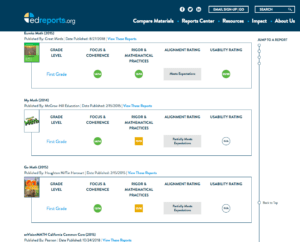 As we were looking at and comparing programs, I started to wonder just how aligned to the standards are these programs that we work with? Jana, one of our math coaches and presenters, suggested we take a look at Ed Report to see the different areas they use to rank programs, and then take our own look at the different programs.
As we were looking at and comparing programs, I started to wonder just how aligned to the standards are these programs that we work with? Jana, one of our math coaches and presenters, suggested we take a look at Ed Report to see the different areas they use to rank programs, and then take our own look at the different programs.
I often have administrators asking me which math program I like best, so I thought this resource would be great to share with you! I really have to be honest and say that I don’t like any of them because there’s not one perfect program. I haven’t found one program that sufficiently covers all of the standards in the way that I have found to be best practice. Most programs don’t use the research of CPA, or the idea of model drawings, and most programs don’t seem to have numeracy enhancement built in.
This is exactly the reason that Strategic Intervention Solutions has created things like Deck o’ Dots, Math Mights, and our model drawings trainings. We want to help add some of those important missing pieces back into programs to help students to understand math more conceptually.
If you’re comparing programs, however, the Ed Report is a great resource. You might look at how well your district’s book or program aligns with what we have as 21st century math instruction. Does it measure up? If not, you can ask the question: Do we need a new book/program? Will a new book or program make instruction any better? Will it make student achievement go up?
In my experience, a new program is unlikely to be a silver bullet to increase student achievement. It comes down to instruction. Teaching a book page by page won’t transfer all the knowledge of the standards to students, no matter what book you have.
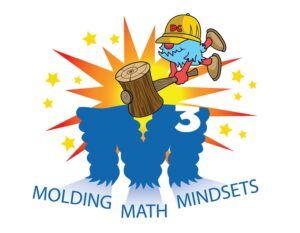
Molding Math Mindsets
Through our Molding Math Mindsets initiative, we go into schools for three or four years working intensely to help teachers teach kids and meet their needs, and that book/program is there to be the train that carries the standards. Through good professional development, can we help mold the math mindsets of 21st century teachers and students, regardless of what program is being implemented.
That’s really what our project is all about. Even if I’m presented with a program that I’m supposed to teach, I know my students better than that book does. The people writing the books may not have even been in the classroom, so they typically aim for a middle of the road approach that doesn’t necessarily consider kids of various abilities (from at-risk to those that excel), even though they include differentiated activities. The book outlines a path for us, but do we feel as teachers that we have the flexibility to look at the audience of the kids we’re teaching and adjust our instruction? If we are able to do that, do we feel confident in the skills that we’re working on?
That’s one of the main areas that we focus on with our teachers, especially within our reverse coaching program. We can help them look at a lesson, try to anticipate the misconceptions, and how come up with a plan for how we can help.
 I think one of the key components of effective math instruction is what goes on in that guided math group. The things I’m doing in my math workshop stations are important because they align with what I’m teaching, but when I have the opportunity to plan a cluster of lessons based on the specific needs and addressing specific misconceptions of my students, that’s where it really begins to take hold.
I think one of the key components of effective math instruction is what goes on in that guided math group. The things I’m doing in my math workshop stations are important because they align with what I’m teaching, but when I have the opportunity to plan a cluster of lessons based on the specific needs and addressing specific misconceptions of my students, that’s where it really begins to take hold.
The ability to meet our students’ needs extends to the worksheets that come with our program. There can be a bit of an internal struggle there because the district paid for them, but when they use more of the traditional way of solving problems or bombard students with 30 problems, we might have to question their effectiveness. Are they necessary? Are you just “getting through” the worksheets? Instead of proving that they can complete a worksheet, could it be more effective to have kids demonstrate diversity in their problem solving skills by solving one of those problems more than one way?
What Now?
I am definitely not saying that you should throw out your math program because you see lots of yellows and reds, but instead, I encourage you to take the time to reflect:
- As a building administrator, have you prepared your staff enough to understand the 21st century standards in conjunction with the 8 mathematical practices and what it looks like to implement that in a classroom?
- As a teacher, do you feel prepared to implement those things?
If the answer is no, it might be time to reconsider the approach we’re taking on mathematics instruction!
Not sure where to start? Contact info@sis4teachers.org to find out how we can help!

